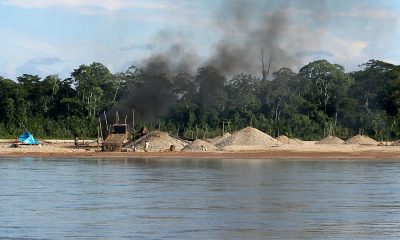By Georgia Lambert via SWNS
Wearing a face mask cuts the distance airborne viruses like COVID-19 travel in half, a new study finds.
The effectiveness of face masks has been a hotly debated topic sinceCOVID-19 began, however, researchers from the University of Central Florida have confirmed that they work in preventing the spread.
Not only are masks "highly effective" in preventing the spread of airborne diseases, wearing them could lessen the need for social distancing.
via GIPHY
What's more, the researchers found that face masks reduce the distance airborne pathogens could travel when a person is speaking or coughing, by more than half, compared to when not wearing a mask.
COVID-19, which is known as SARS-CoV-2, can be transmitted through liquid droplets and aerosols created by sneezing, coughing, or speaking.
While keeping people as safe as possible, knowing the ways to reduce the transmission distance could help experts to manage their response to pandemics - like the one we're living in, which has caused a global-scale infection, healthcare overloads, and economic destruction.
The study's co-author Kareem Ahmed, an associate professor at the university's department of mechanical and aerospace engineering, said: "The research provides clear evidence and guidelines that three feet of distancing with face coverings is better than six feet of distancing without face coverings."
Using methods commonly used for understanding how fluids move through the air, the researchers measured the distance in which droplets and aerosols travel when people speak and cough while wearing different types of masks and when they don't wear any protective clothing.
Funded by the National Science Foundation, 14 people, aged from 21 to 31, participated in the study.
Each participant was asked to recite a phrase and to simulate a cough for five minutes without a face covering, with a cloth face covering, and with a three-layered disposable surgical mask.
A technique called planar particle imaging was used to measure the velocity of the particles while the team got to work analyzing other behaviors and the direction of the particles as they traveled from the mouths of the participants.
The researchers found that wearing a cloth face covering reduced emissions in all directions to about two feet compared to the four feet of emissions produced when coughing or speaking with no mask on.
The reduction was even greater when the participants wore a surgical mask, which reduced the distance by half a foot.
According to Professor Ahmed, the researchers got the idea for the study from the jet propulsion research they carry out.
He said: “The principles are the same. Our cough and speech are exhausted propulsion plumes.”
The study is a part of the researchers' overall efforts to control the transmission of airborne diseases.
They have also focused their research on how the spread occurs through food and they are looking to strengthen their understanding of what makes a person a super-spreaders and how airborne diseases are transmitted in classrooms.
Going forward, the team wants to expand the study using more participants.

 Parenting1 week ago
Parenting1 week ago
 Lifestyle1 week ago
Lifestyle1 week ago
 Wildlife3 days ago
Wildlife3 days ago
 Good News4 days ago
Good News4 days ago
 Health4 days ago
Health4 days ago
 Entertainment1 day ago
Entertainment1 day ago
 Animals7 hours ago
Animals7 hours ago
 Broadcast13 hours ago
Broadcast13 hours ago




















